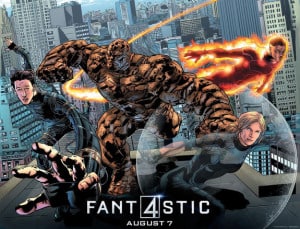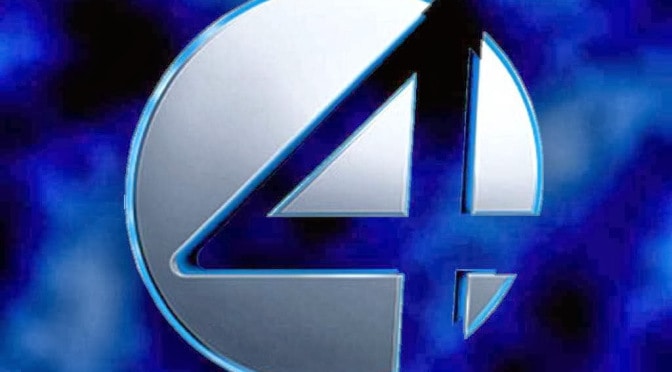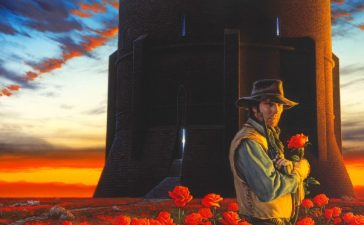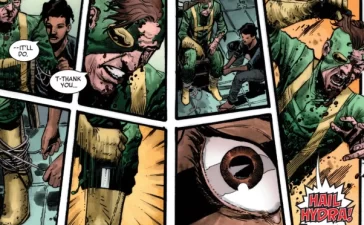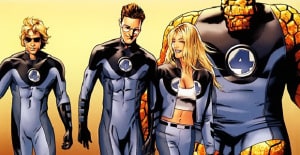 The Fantastic Four was the book that kicked off the Marvel Universe as we know it, and its a title that has proven challenging to reinvent since the 60s. It still has an impressive history, rife with runs for those looking to dive in in preparation for the upcoming reboot from Fox. Instead of a Top Ten, this is more of a discussion of my favorite stories/runs that people new to Marvel’s First Family might enjoy…
The Fantastic Four was the book that kicked off the Marvel Universe as we know it, and its a title that has proven challenging to reinvent since the 60s. It still has an impressive history, rife with runs for those looking to dive in in preparation for the upcoming reboot from Fox. Instead of a Top Ten, this is more of a discussion of my favorite stories/runs that people new to Marvel’s First Family might enjoy…
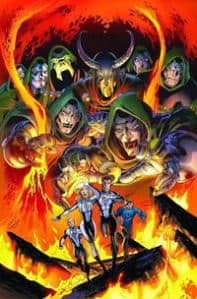
The FF is composed of Reed Richards, Susan Storm, Her younger brother Johnny, and Reed’s best friend Benjamin Grimm. who were all survivors of a scientific accident. In the 616 Universe, this was a failed Space mission trying to beat the Russians to the Moon (yes really) which exposed them to strange Cosmic Rays. After crashing back to Earth, they were all changed and gifted with strange powers. Reed gained elasticity powers, Sue the ability to turn invisible and project force fields, Johnny became impervious to fire and could ignite his body in flame, and Ben’s body turned into orange stone. Rather than hide in false names away from the world, Reed pushed the group out into the open and formed a company to continue their lifestyle of adventure.
Intro to Advanced Ideas
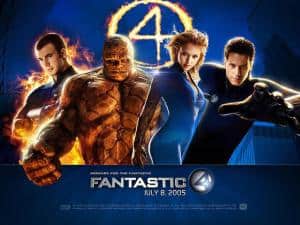
The Fantastic Four movie from 2004 is, as many have said, pretty forgettable. The pieces are there but they don’t really come together (not uncommon for the Fox produced movies outside of the X-Men films). Chris Evans’ Johnny Storm is very annoying and devoid of much substance and Jessica Alba’s Sue Storm just wants people to notice how hot she is instead of how smart she could be (YES, REALLY). Michael Chiklis’ Ben Grimm is actually pretty spot-on, but also highlights how lacking everyone else is in their portrayals.
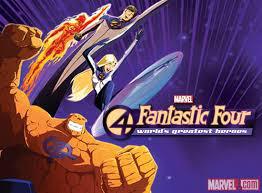
Produced a year after the film, following its origin for the characters, a cartoon version of property had a short and sporadic viewing schedule on 3 different networks. Revisiting it, it’s a decent cartoon that in hindsight fares better than some more recent Marvel attempts at animation. For one thing, adapting the FF can go to some mediocre territory.It’s not as simple as a kid from Queens with spider powers, or a group of outcasts with cool powers and catchy names. It’s actually much simpler but the execution is harder to reach. For another, this is leagues above the anime cartoons that Marvel has failed to make succeed despite the hype when they were announced. Still, this show didn’t catch on for a few reasons. There’s a confidence here though, almost a kitsch factor in the writing. The show “gets” the material better than the first two Fox films, so it’s almost a shame they didn’t just make an animated feature with the cartoon’s crew behind it. Good for cartoon fans who want an FF show but won’t get an animated version of the property for the next 10 years at least.
Intermediate Science

Ultimate Fantastic Four is a good place to start reading about FF and is also most likely the basis for the upcoming reboot. Written by Brian Micheal Bendis and Mark Millar, with art by Adam Kubert, its an update of the mythos that should be accessible for anyone. Instead of space travel, an attempt to breach another dimensional plane is what’s behind the accident that gives five teenagers incredible powers. Victor Van Damme (Doctor Doom) is part of the experiment, consolidating his source of power and his reason for hating Reed Richards. Aside from that, it plays out most of the beats from the first issue of Fantastic Four.
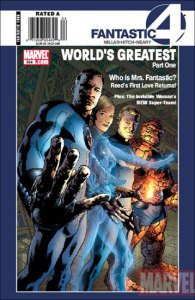
The team behind The Ultimates reunite for several blockbuster stories. Rechristened “World’s Greatest”, Millar takes the FF to a new Earth meant for the uber rich, 500 years into the future, and the wedding of the Thing. Millar throws a hundred ideas at the reader, and Bryan Hitch uses his widescreen art style to show all the bombastic events. It’s not the deepest examination of the team, but each character has a plot thread to work through. It shows an appreciation of the characters that would be fit right in as a live action feature.
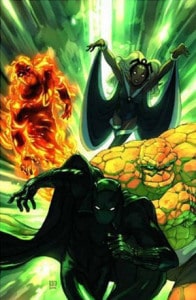
Dwayne McDuffie’s run had the daunting task of moving the FF past Civil War, which he deftly did. With Reed and Sue’s split during the previous event, McDuffie used the opportunity to swap them out with King T’Challa and Ororo Monroe. This doesn’t change the team dynamic, but instead adds several layers to it. On top of that, McDuffie still finds time to show Reed and Sue on a second honeymoon to reconcile from their split. A smart run that leads up to Millar and Hitch’s.
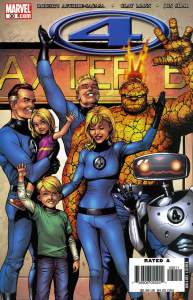
Roberto Aguirre-Sacasa (Afterlife with Archie) wrote a 30 issue run for the Marvel Knights line, which sought to be a clean continuity imprint that could entice readers. Sacasa starts out his time on the book by bankrupting the Fantastic Four, forcing them all to get real jobs and focus on staying together as a family. With art by Steve McNiven, its a great way to kick off the series. After that, different artists come on and the quality suffers. The stories become more of a greatest hits run of the property, but Sacasa keeps a handle on all the characters. Uneven on the art, but good for storytelling.
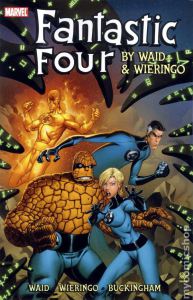
Mark Waid and Mike Wieringo’s FF run is a full on classic, with a great understanding of the team’s history as well as a cartoonish look to go with it. It’s wacky, its dramatic, and its not boring, which Waid states as one of his goals for the series in an introduction. If someone wanted a solid run of classic stories, this is where I’d point them. Waid lets his imagination run wild on the book, and it helps make it one of the most satisfying runs a FF fan could ask for.
Advanced Ideas-Cutting Edge
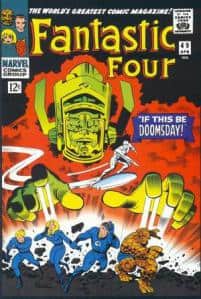
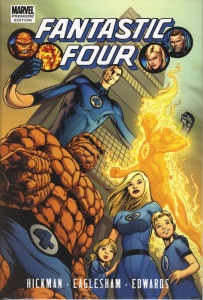
Everything is built on the foundation left by Stan Lee and Jack Kirby, so for any die-hard fans that run becomes required reading. Skrulls, Kree, the Inhumans, even Galactus are found here for the first time anywhere in the 616 Universe.
Keeping in that revolutionary vein, Hickman’s run is the most successful critically and financially. The title was so successful it actually launched a spin-off, almost unprecedented for any comic without “Bat” or “Spider” in the name. Hickman keeps a lot of plates spinning and it requires the reader to pay attention and keep track of it all. I wouldn’t recommend it to someone new to the FF or comics, but for those feeling brave and who love complex storytelling, it should be an easy sell.
In Conclusion…
Each of these runs has something I love about them and have a lot to live up to with the title of “Fantastic Four”. But they’re stories I keep coming back to for my fix of the fantastic.
